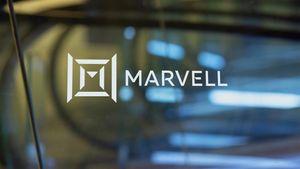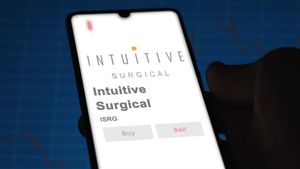RIGA, LATVIA / ACCESS Newswire / October 1, 2025 / Alright, so you've seen 15‑second routine clips sell out serums, and you've heard the hype about User Generated Content (UGC). Unlike traditional ads, which often deliver polished, promotional messages, UGC stands out for its authenticity and social proof, engaging audiences in a more genuine way. But most advice skips the part founders actually care about: turning that content into real orders when you're launching a private‑label skincare product.
Do you need a huge budget or a celebrity collab? Not really. Will a bigger creator help? Sometimes, but the right fit, a clean brief, and a camera‑ready product beat follower count every time.
In this article, we'll keep it simple: pick a single hero SKU, start with small batches so cash isn't stuck in inventory, write a brief that creators want to film, use a shot list that sells texture, and run a 30‑day plan that takes you from first samples to the first 100 sales. We'll show how UGC tutorials and creator partnerships can actively drive sales and boost brand revenue, turning engagement into real orders. No fluff-just steps you can copy this month.
Stay with us if you want a play‑by‑play for launching with UGC (not guesswork).
Why UGC is your unfair advantage
Seen those texture macros and routine check‑ins? They work. In the beauty industry, brands are leveraging UGC and influencer collaborations to connect with consumers and stay competitive. People buy what they can see, feel, and trust through creators they already follow.
Pair that with private‑label, print‑on‑demand agility, and you can seed samples fast, tweak labels without big MOQs, and even co‑create limited drops. By leveraging UGC, you can build trust and engage different audiences more effectively. This guide shows you how: pick a hero SKU, prep assets, seed and brief creators, run a 30‑day launch, measure what matters, and scale what wins.
Pick one hero SKU (one is plenty)
When launching a skincare line as part of your private-label strategy, focus on one product, one problem, and one audience. That's the play. Example: a barrier‑supporting hydrating serum for dehydrated or sensitive skin. Give creators one clean story-feel, finish, where it fits in the routine, and what it pairs with. Pick packaging that shoots well (droppers = texture; airless pumps = premium). Use high contrast labels that read on a phone screen. If you're using a private‑label partner like Selfnamed, spin up small‑batch samples and iterate labels quickly based on what creators want to film.
A one‑week pre‑launch prep
Give yourself one week. Write a tight three‑line product story in plain language, list your INCI and usage directions, and sketch a simple product page: benefits, routine placement (e.g., "after cleanse, before moisturizer"), ingredient highlights, FAQs, and a light disclaimer about patch testing and results varying. When designing your product pages, optimize by including user-generated content such as reviews, photos, and Q&A sections to build trust and increase conversion. Be sure to highlight product benefits clearly so customers immediately understand the value.
Set up tracking once: one landing page for launch, plus a unique code and UTM link for each creator. Prep your one‑page brief, shot list, and outreach copy so you're not writing on the fly. Use customer insights from UGC and social media to refine your messaging and product positioning.
Build a tight list of creators
Follower count is nice. Fit is better. Scan comments for real skincare questions (texture, layering under SPF, sensitivity). Prioritize creators with clean natural light and steady framing. When building your list, focus on micro influencers and relevant influencers who have authentic connections to your target audience and current trends. Start with 30-60 micro‑creators and a few midsize partners. Invite happy customers into the first-impression videos to convert. Offers can be gifted + affiliate, gifted + a small fee for deliverables, or a co‑created "limited drop" slot when you want buzz. During the selection process, make sure to identify the right creators who align with your campaign goals and brand values.
A message you can paste in DMs: "Love your minimal AM routine vids. We're launching a hydrating serum that suits dry/sensitive routines. Can we send a labeled sample? If you like it, we'll share a simple brief and your own code for followers."
A short email option: Subject: [Creator Name] x [Brand] hydration test? Body: "Hi [Name]-I'm [Your Name] from [Brand]. We're introducing a 30ml hydrating serum designed for sensitive, dehydrated routines. Your audience asks great texture and under‑makeup questions, so we'd love to send a full‑size plus a mini. If it fits your routine, we'll follow with a one‑page brief and your own link/code. Timing: [date range]. Usage rights: organic reposts (paid optional). Interested?"
A creator brief that's clear, compliant, and creative
Your objective is simple: first impression, routine placement, and texture payoff. Offer a few hook ideas, such as "What a hydrating serum actually looks like under makeup" or "A five‑day sensitive‑skin test." Keep the structure tight: an unbox moment for the label, a macro texture shot, application on the face or back of the hand, a quick note on where it sits in the routine, and an on‑screen call to action with the creator's code. Unboxing videos are especially popular and effective for generating authentic user-generated content, as they showcase genuine reactions and help build trust and brand awareness.
Be explicit about language. Encourage creators to create content that is both informative and engaging-describe feel, absorption, slip, finish, scent, and layering under SPF or makeup. Engaging content is crucial to capture attention and drive conversions. Avoid medical or disease claims, avoid implying SPF benefits unless the product is an approved SPF, and skip phrases like "clinically proven" without substantiation. Ask for proper disclosure (#ad or platform paid‑partnership tools) when there is compensation or a material connection.
A 30‑day launch timeline
Structure your launch as a series of campaigns to source and showcase user-generated content (UGC) throughout the 30-day timeline.
Week 1: Prep and shipping. Finalize your product page, tracking, brief, and shot list. Ship 30-60 labeled kits without committing to big MOQs; add a thank‑you note and a QR link to the brief. Warm up your audience with "texture test coming" teasers.
Week 2: First wave goes live. Aim for 10-20 organic posts from the first batch of creators. Repost same‑day on your brand channels and add two or three of the strongest clips to the top of your product page as short loops. Feature one creator in email and SMS to drive early traffic. Use UGC and paid strategies to drive traffic to your product pages and increase audience interaction.
Week 3: Light paid and merchandising. Run small budgets behind the top three creator assets. Test the first frame carefully: start with a texture macro, a routine lineup, or the creator's face intro and compare watch‑through. Add a simple "Routine Bundle" (for example: Cleanser + Serum + Moisturizer) and ask two creators to film that three‑step sequence. Leverage marketing campaigns to increase engagement and boost visibility across your channels.
Week 4: Push to 100. Offer a limited‑time code, lean into creator testimonials, and cut a brisk roundup video-"five creators tried our hydrating serum"-to retarget recent visitors. Close the month with a short recap to creators, sharing what performed best and how these efforts contribute to your overall marketing campaigns and brand growth.
Repurpose without fatiguing your audience
Match format to channel. On the product page, loop three‑second texture shots and a small "real routines" carousel. In ads, cut 6s/12s/20s versions and label the creator on screen. In email/SMS, lead with one GIF and a single‑line creator quote. Pin your top three creator posts on TikTok or Instagram. Add a QR on packaging that links to a UGC playlist. Leverage Instagram Reels to organically post user-generated content, using features like green screen and split-screen effects, and consider boosting top-performing Reels with paid promotions to increase reach.
Encourage more user-generated content and more UGC by running contests, promoting unboxing experiences, and incentivizing social sharing. These strategies help drive authentic content creation and boost organic brand engagement.
Rights, disclosures, and claims
Think in tiers. Default to organic repost rights on your channels for a set period. Get written permission for whitelisting or paid ads, and be specific about duration, platforms, and geographies. Always disclose (#ad or platform tools) when there's compensation or a material connection. Keep claims cosmetic-look, feel, appearance-and recommend patch testing; results vary. Don't imply SPF protection unless the product is an approved SPF with compliant claims.
Measure what matters
Don't just count likes. Give each creator a unique code and UTM link to a single launch landing page. Track code redemptions, link clicks, 3‑second hook retention, saves/shares, and time on page after you add UGC. Monitor your conversion rate closely-user-generated content (UGC) and customer reviews provide powerful social proof that builds trust and credibility, often leading to higher conversion rates. For paid, compare view‑through vs. click‑through and watch the thumb‑stop rate. Healthy early signals: ~33% still watching at 3 seconds, 1%+ save rates, and a visible lift in product‑page engagement and conversion rates once UGC moves near the top.
Troubleshooting in plain English
If replies are scarce, tighten fit by skin type and show visual mockups in your pitch. Pretty visuals but weak sales? Move UGC higher on the page, showcase authentic customer interactions to attract potential buyers, add routine context in the first five seconds, and test a simple bundle CTA. High views, low clicks? Sharpen the hook and put a three‑word benefit on screen. Clicks but stalled carts? Simplify variants, surface shipping/returns sooner, and use UGC and reviews to encourage customers to complete their purchase by adding a creator quote above the fold.
Scale moves you can run quarterly
Use your private‑label agility for creator‑named limited editions on a 30‑day window. These strategies can drive business growth and success by helping your business stand out in a crowded market. A/B minimalist vs. bold labels and keep the version that lifts saves and watch‑through. Turn a winning video into a "starter routine" bundle and brief creators to film a 20‑second morning routine around it. Invite top performers to help co‑design a scent, a texture note, or a label accent, ultimately leading to increased engagement and repeat purchases for businesses.
Final thoughts
You don't need a huge audience or budget to launch. You need one clear product, authentic creator stories, rights you can actually use, and a simple measurement loop. Run this playbook for 30 days and you'll have your first 100 orders-and a repeatable path to scale. We hope this helps!
Media Details:
Company name - Selfnamed
Contact Person - Emils Kilberts
City - Riga
Country - Latvia
Email - emils@selfnamed.com
website url - https://www.selfnamed.com/en
Phone +37126103543
SOURCE: Selfnamed
View the original press release on ACCESS Newswire






